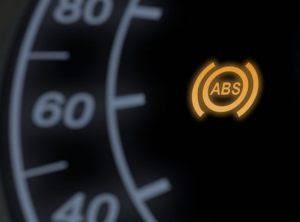ABS DTC codes, or anti-lock brake system diagnostic trouble codes, are codes that are generated by your vehicle’s computer system when it detects a problem with the ABS system. The ABS system is a safety feature that prevents your wheels from locking up during hard braking, which can help you avoid skidding and maintain steering control.
Last month, a customer rolled into my shop with their SUV making a very weird grinding noise whenever they applied the brakes. "It's been throwing an ABS light for weeks," they admitted, "but I figured it could wait." What they didn't realize was that 47% of all vehicles with active ABS warning lights are operating with significantly reduced braking capacity, especially in emergency situations.
Your Anti-lock Braking System isn't just another dashboard light to ignore, it's an important safety network that prevents wheel lockup during hard braking, maintaining steering control when you need it most.
Understanding ABS Diagnostic Trouble Codes
Diagnostic Trouble Codes (DTCs) are your vehicle's way of communicating specific problems within the ABS system. Each code represents a particular issue detected by the vehicle's onboard computer. When your ABS light illuminates, it's not just saying "something's wrong", it's pointing to exactly what needs attention.
DTCs follow a standardized format that helps technicians quickly identify problems. For example:
- C0035: Front Right Wheel Speed Sensor Circuit Malfunction
- C0040: Rear Left Wheel Speed Sensor Circuit Open
- C0110: Pump Motor Circuit Failure
Reading these codes requires a diagnostic scanner that can communicate with your vehicle's ABS module. Basic code readers often can't access ABS systems, you'll need either an advanced scanner or a professional-grade diagnostic tool.
Most Common ABS DTCs and Their Solutions
Wheel Speed Sensor Codes (C0035 - C0050)
The most frequent ABS issues stem from wheel speed sensors. These magnetic sensors monitor wheel rotation speed and send this data to the ABS control module. When they fail, your ABS can't function properly.
- Symptoms: ABS light on, traction control disabled, unstable braking.
DIY Repair Steps
- Locate the faulty sensor using your scan tool (typically attached near the wheel hub or bearing)
- Inspect the wiring for damage, corrosion, or loose connections
- Check sensor mounting for proper alignment and secure attachment
- Clean the sensor using electrical contact cleaner if it's contaminated
- Test resistance with a multimeter (should be 900-2500 ohms depending on make/model)
- Replace if damaged or readings are outside specifications
Most wheel speed sensors can be replaced with basic hand tools in under an hour. Expect to pay $20 - 120 for the part depending on your vehicle.
ABS Module Failure (C0110-C0121)
The ABS control module is the brain of your braking system. When it fails, you'll typically need specialized equipment for diagnosis and repair.
- Symptoms: Multiple ABS codes present, complete ABS system failure, unusual behavior from brake pedal.
Repair Options
- Module replacement ($300 - 1200 depending on vehicle)
- Module rebuilding services ($150 - 400 through specialized repair companies)
- Circuit board repair (for technicians with electronics experience)
I generally recommend module rebuilding services for older vehicles, as they're often more cost-effective than dealer replacements. For newer vehicles still under warranty, dealer replacement is usually best.
Hydraulic Unit Problems (C0200 - C0235)
The ABS hydraulic unit contains solenoids, valves, and a pump that physically control brake pressure during ABS activation.
- Symptoms: Grinding or buzzing during braking, inconsistent pedal feel, complete ABS failure.
Professional Repair Required
This repair typically requires a professional shop with specialized equipment for bleeding and pressure testing the system. Costs range from $700 - 1500 for parts and labor.
DIY Testing Tools and Techniques
For the home mechanic willing to tackle ABS repairs, several affordable tools can help:
- ABS-Capable Scanner: BlueDriver ($100) or Autel MaxiDiag ($170) are excellent choices that read and clear ABS codes on most vehicles.
- Digital Multimeter: Essential for testing sensor resistance and circuit continuity. A quality automotive multimeter costs $30 - 80.
- Sensor Cleaning Kit: Includes wire brushes and electronic cleaner spray ($15 - 20).
Remember to always disconnect your battery before working on electrical components! And be sure to road test thoroughly after any ABS repair to ensure proper operation.
When to Call a Professional
While many ABS issues can be diagnosed and repaired at home, certain scenarios warrant professional attention:
- Multiple codes present simultaneously
- Intermittent problems that are difficult to reproduce
- ABS module programming requirements
- Hydraulic system issues requiring bleeding
- Any brake problem where you're unsure of the proper repair procedure
The average diagnostic fee at a repair shop is $100 - 150, but this investment can save you from costly misdiagnosis or improper repairs. Your braking system isn't where you want to cut corners!
Preventative Maintenance
The best ABS repair is prevention. I recommend these simple maintenance steps:
- Keep wheel bearings properly maintained (loose bearings damage sensors)
- Inspect ABS wiring during routine services
- Address ABS warning lights immediately
- Flush brake fluid every 2 - 3 years to prevent internal corrosion
- Keep wheel speed sensor mounting areas clean from debris
Following these preventative measures can help you avoid most common ABS problems before they begin.
As one of my mentors once told me, "The best mechanics prevent problems before the warning light ever comes on." With proper attention to your ABS system, you'll enjoy safer, more reliable braking for the life of your vehicle.

Comments (0)
Please login to join the discussion
Be the first to comment on this article!
Share your thoughts and start the discussion